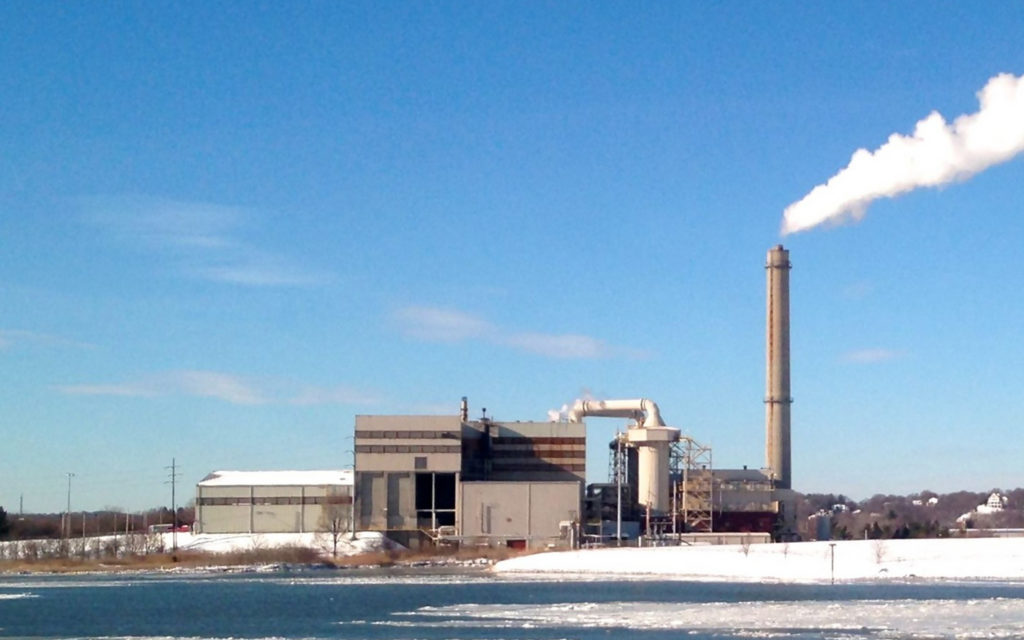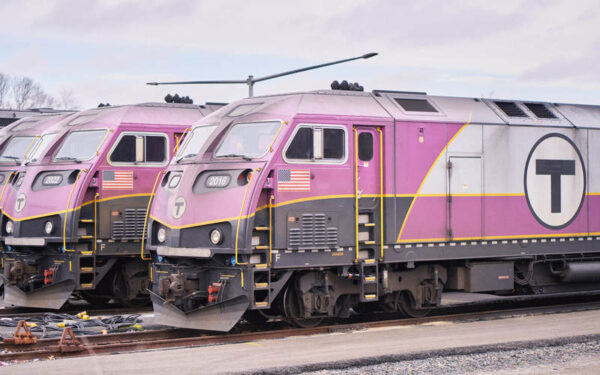
MassDEP has just approved an massive expansion at the Wheelabrator Saugus ash landfill, putting communities and the environment at further risk from its toxic pollution. Photo: Photo: Fletcher6 via Creative Commons 3.0
Update May 9, 2018: Conservation Law Foundation has filed an appeal to stop the expansion of the Wheelabrator Saugus ash landfill.
When the Massachusetts Department of Environmental Protection (MassDEP) this week gave its final okay for an ash landfill in Saugus to expand, it signaled that polluting our communities and our environment is perfectly fine – even if it lacks the liner and groundwater monitoring required at every other ash landfill in the state.
The landfill in question is the Wheelabrator ash landfill in Saugus, which has dumped ash from burned trash on the site for more than 40 years. With MassDEP’s approval, Wheelabrator can now dump another 500,000 tons of toxic ash there over the next five to ten years.
People living near the landfill have long had concerns about the landfill’s effects on their health, as well as its impacts on the fragile Rumney Marsh, in which the facility is located. But despite calls from local citizens, community groups, elected officials, and groups like CLF to permanently and safely close and cap this landfill once and for all, MassDEP neglected its duty to protect the people and environment of the Commonwealth.
We’re not ready to give up our fight against this expansion just yet, however, and we’ll need your help if we’re going to shut down this landfill for good.
MassDEP’s Playbook on the Saugus Landfill Hasn’t Changed in More Than 20 Years
MassDEP has a long history of sanctioning the operation and expansion of the Saugus landfill. Back in 1989, the agency declared Rumney Marsh (including the landfill) an Area of Critical Environmental Concern and entered into an agreement with Wheelabrator whereby the landfill would close in 1996. But rather than holding Wheelabrator to the original terms of the agreement, MassDEP has allowed the landfill to not only remain open but to continuously add more capacity so it can keep receiving ash.
Those of us who have fought this landfill’s continued operation hoped that things would turn out differently when Wheelabrator wanted to expand the site again in 2017 – because it was the first time in decades (really) that MassDEP allowed the public to provide input and voice their opposition.
Dozens of people spoke at a public hearing in Saugus in late November, nearly all imploring MassDEP to shut this landfill down. Many more submitted written comments to the agency expressing concerns about pollution and health impacts, and the disproportionate effect this landfill has on environmental justice communities. Along with many form comments, MassDEP received more than 150 unique letters that expressed strong opposition to the ongoing operation of the landfill, let alone its expansion.
But MassDEP turned a blind eye to the public’s concerns. The agency’s approval increases the landfill’s capacity to operate for five more years – a full 27 years beyond its original 1996 shutdown deadline.
Expanding This Landfill Poses Huge Continued Risks to the Local Environment
Allowing the Saugus landfill to continue to operate – and now expand – puts Rumney Marsh at further risk. With the landfill resting in water in the middle of the marsh, there is nothing to keep the poisonous dioxin and heavy metals in the incinerator ash contained. (Wheelabrator often claims that its landfill is lined, preventing pollution from leaking into the environment, but what they are referring to is the naturally occurring clay soil that happens to be under the facility. However, clay is porous and becomes more so over time. In fact, the Saugus landfill is the only municipal solid waste or ash landfill in the Commonwealth that is unlined.)
We have no way of knowing just how much toxic pollution from the landfill is impacting the Rumney Marsh, however, because the facility lacks a groundwater monitoring and reporting system – something required at every other landfill operating in Massachusetts and required under federal law. That Wheelabrator has been allowed to skirt those legal requirements is just another failing of MassDEP in this landfill’s long polluting saga.
We Don’t Need This Landfill
The landfill’s impact on the local environment alone should have been enough for the Commonwealth to deny Wheelabrator’s proposal to expand. But MassDEP also seems intent on ignoring the fact that, if our waste was handled properly, the landfill wouldn’t need to expand at all.
Wheelabrator currently buries more than 100,000 tons of ash each year, but about 80 percent of the materials burned at the incinerator (according to the company’s own reporting) are recyclable or compostable. These materials include cardboard, paper, glass, metals, textiles, food waste, and mattresses. That means that more than 80,000 tons of ash every year shouldn’t be created in the first place. If the Commonwealth addressed that issue, then Wheelabrator would no longer need more space in the landfill.
Next Steps
CLF is currently reviewing MassDEP’s decision and working with our local partners to assess next steps… stay tuned by making sure you’re signed up to receive email updates from us.




